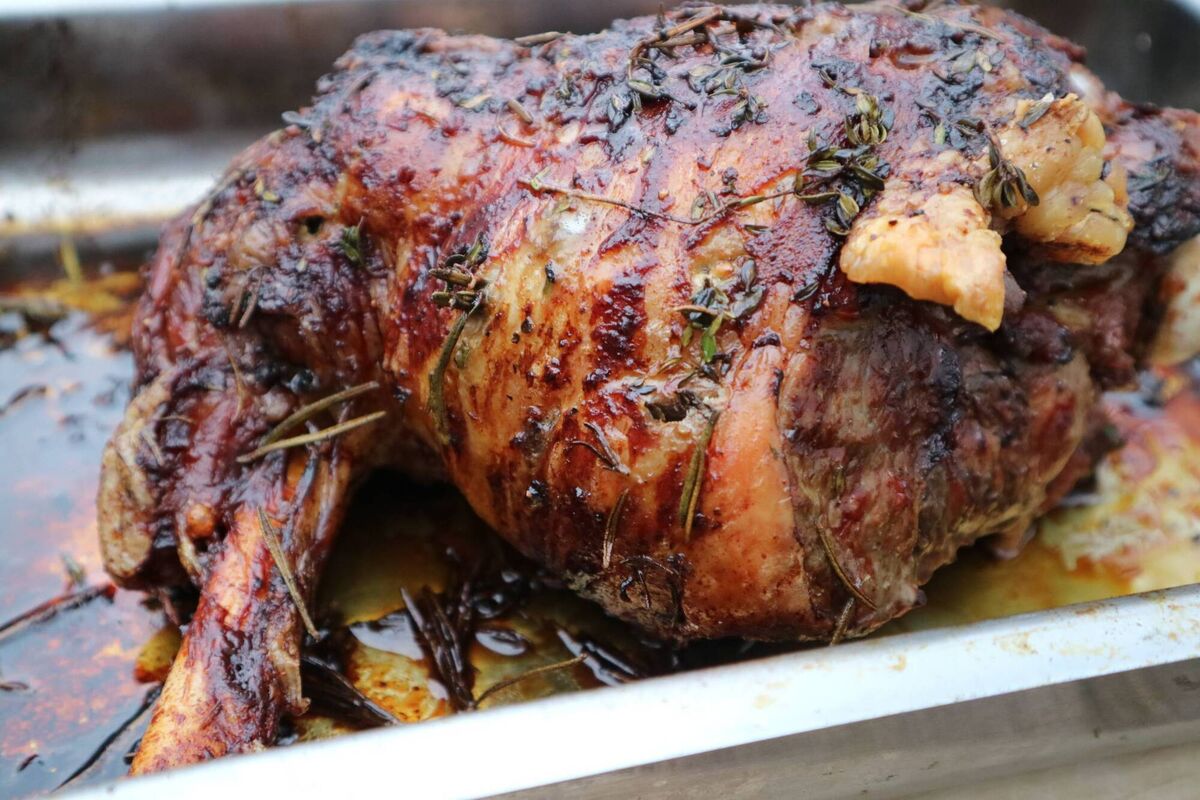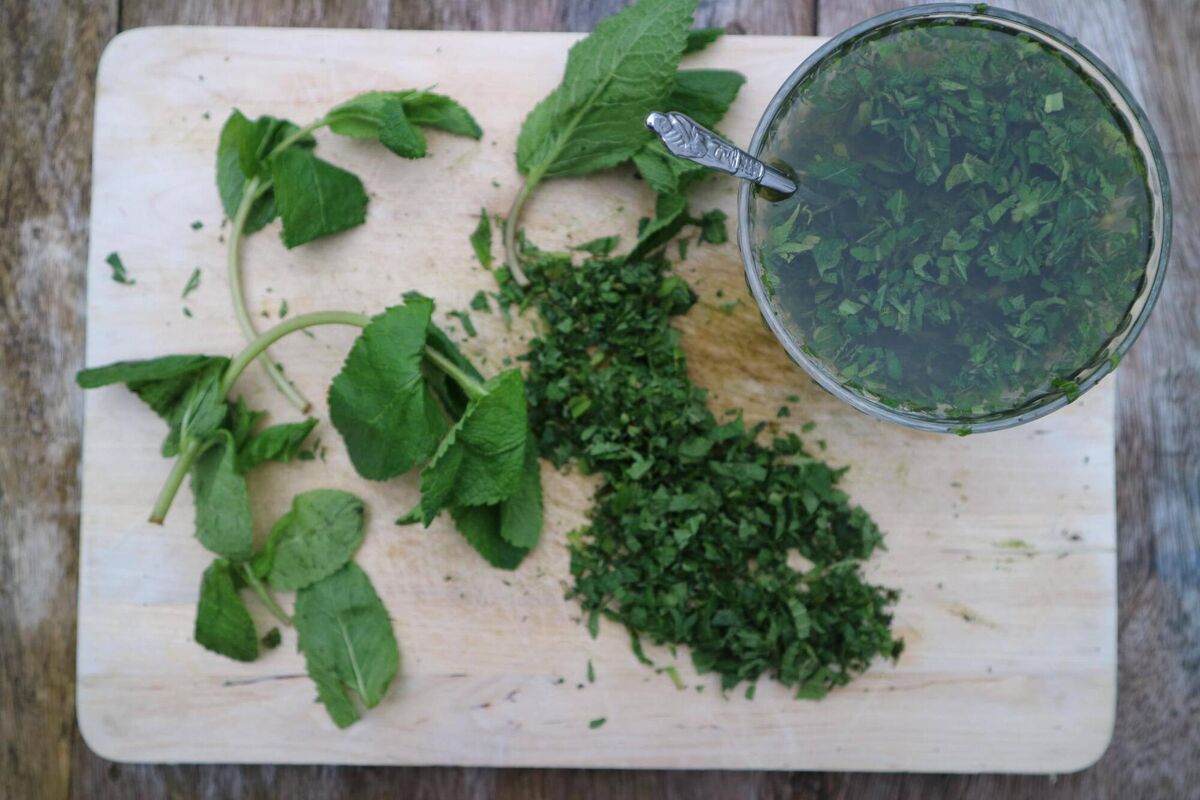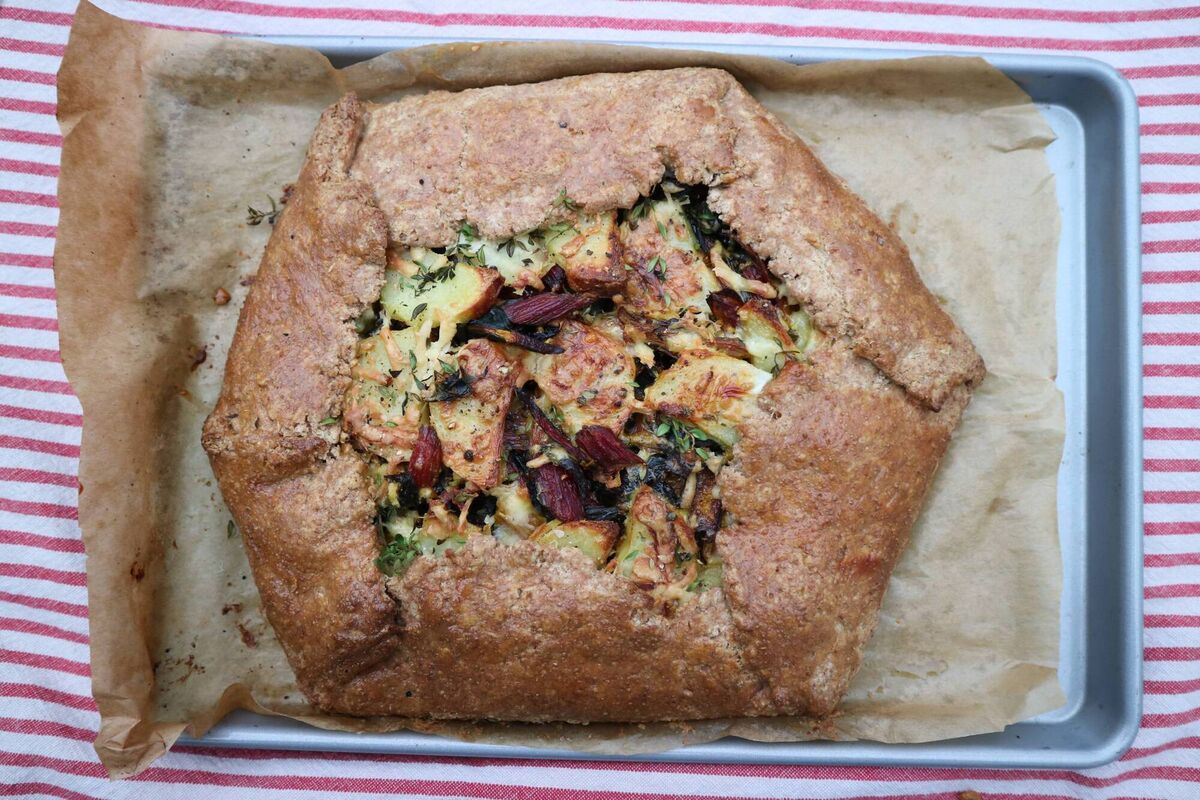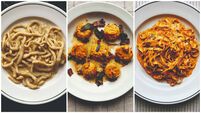Currabinny Cooks: How to make roast lamb with mint sauce for Easter dinner

Currabinny: roast lamb
Easter is almost upon us and spring is in full swing. Roast lamb is definitely the thing to make for this occasion.
As such, the whole industry of producing spring lamb as we know it today has sprung up around this feast day. There are many amazing producers of lamb in Ireland so make sure you get your meat from a good quality assured producer. There is absolutely no excuse for cheap, factory- farmed lamb.
A big roast like on Easter Sunday, is a special occasion and therefore the meat should be chosen for quality and not price. Animal welfare, protection of the environment and quality of the products should all at the forefront of our minds this Easter.
There are few things that are so simple yet so impressive. Roasting meat was a bit of a mystery to us a few years ago as we tended not to cook a lot of meat, especially so much meat as a whole leg of lamb. We have recently been getting more into it. It is important to find meat that you can be sure is of top quality and where welfare and the environment are of top priority. Therefore, always look for the Bord Bia quality mark when choosing meat.

- 2kg leg of lamb
- 8 anchovy fillets
- 8 sprigs of rosemary
- Bunch of thyme
- Sea salt
- Olive oil
Preheat the oven to 180°C.
Place the lamb on a large board and stab it all over around 16 times, quite deeply. In eight of the holes stick a fillet of anchovy, and in the other eight stick a sprig of rosemary.
Season all over with sea salt and then cover with olive oil. Scatter a bunch of thyme stalks all over and tuck some under the leg as well.
Transfer to a large baking tray and place in the oven. We tend to leave it in there for around 1 ½ hours so that it is a little past the pink stage. Reduce the time by 10 minutes if you like your leg of lamb very pink of course. We baste the leg a few times during the cooking with any juices that are in the tray.
Take out of the oven, cover in foil and leave to rest for around 15 minutes before carving.
Pour a little boiling water into the baking tray and heat over the hob, scraping the bottom of the pan to release all of the flavour. Strain into a jug, season and you have a simple gravy.
Serve your lamb with simple spring vegetables such as green greens, peas and tender-stem broccoli, along with the mint sauce and galette.
The joyous simplicity of a mint sauce. We almost never do without this classic sauce when having lamb. It is associated with the more traditional preparation of lamb, but even if we introduce more exotic flavours, we feel that mint sauce is always appropriate.

- A big bunch of mint, leaves only
- 1 tablespoon of caster sugar
- Pinch of sea salt
- Apple cider vinegar to taste
Chop your mint leaves as finely as possible on a large chopping board. Place the chopped mint in a medium-sized bowl. Add one tablespoon of caster sugar to the bowl of mint and pour over freshly boiled water so that all of the mint is submerged. Stir a little so the sugar dissolves. Add a pinch or two of sea salt. Tasting as you go, add the apple cider vinegar a tablespoon at a time until you get the right balance of sweet and sharp for you.
Down in Currabinny, the vegetable patch is often overrun with big, leafy, crimson and golden stalks of chard. We usually try to use them up as much as possible — if left they succumb to the hungry snails and other bugs.
This free-form tart is both rustic and elegant and we make it often as a sort of side dish throughout the spring. The pastry is very straightforward to assemble and is also easy to work, rollout and form. As this is a freeform galette, you do not have to worry about making this look perfect or uniform.

- 400g chard, stems and leaves
- 3 fat cloves of garlic, finely chopped
- 2 sprigs of rosemary, needles chopped finely
- 2 medium-sized waxy potatoes, peeled
- 100g good strong chaddar cheese
- 50g butter
- Olive oil
- 300g wholewheat spelt flour
- 175g butter
- 2 eggs beaten
- Sea salt
Separate out the chard leaves from the stems. Cut the stems into ½ inch pieces. Heat the butter in a large frying pan over a medium-high heat with a drizzle of olive oil. Add the chard stems to the pan and cook for 6-8 minutes until softened. Add the chopped garlic and chard leaves, allowing the leaves to wilt a little.
After two minutes add around 80ml of water, cover and leave bubble away for another couple of minutes until the chard leaves have completely wilted down. Uncover, take off the heat and stir in the chopped rosemary.
Decant into a bowl and leave to cool. Boil the potatoes until just undercooked. Leave to cool and then slice into thick discs.
To make the pastry, measure the flour into a large mixing bowl and add a pinch of sea salt.
Cut the butter into small cubes and add to the bowl. Using your fingers, rub the butter into the flour until you get a sort of fine crumble. Add 1 beaten egg and mix together until you get a smooth dough, you may need to add a splash of cold water if it is too dry. Pat the dough into a thick disk, cover in baking paper and place in the fridge for around 30 minutes.
Preheat the oven to 200°C.
Roll out the pastry on a floured surface, or on a large piece of baking parchment. You want the pastry to be roughly round and be relatively thin.
Transfer the pastry to a large lined baking tray. Drain the chard mixture of any excess liquid and place it in the middle of the rolled out pastry. Place the potato discs on top and season with sea salt and black pepper.
Sprinkle the grated cheddar cheese over it and then fold up the edges so that you cover the outer perimeter of the filling, leaving an opening in the middle. Brush the pastry with the remaining beaten egg.
Place in the preheated oven and bake for around 35-40 minutes until the pastry is golden brown. Leave to cool a little before slicing up and serving.








